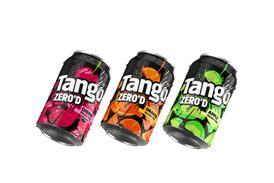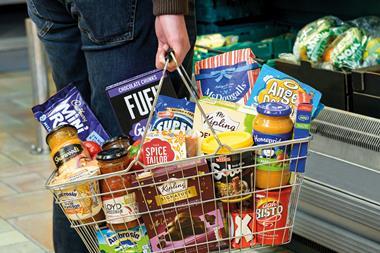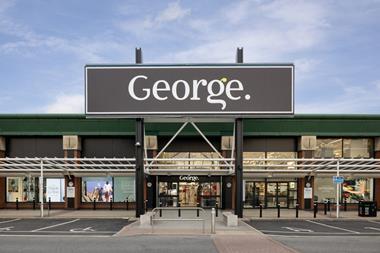The multiples all seem keen to boost their confectionery ranges and provide a point of difference from the brands, but no one wants to be drawn on details, finds Rachel Barnes
aThe own-label confectionery market is seen as an important and developing sector by all the major supermarkets and consequently it is growing faster than the overall sector. According to TNS data for the year to August 14, own label outperformed the market with 7.7% growth, compared to 4.3% for total confectionery.
However, own-label sales still account for less than the average own label in packaged grocery. Within sugar confectionery, own label makes up 10.6%, while own-label chocolate makes up just 6.8% of the total chocolate category. This is most likely due to the nature of the product and the strong heritage enjoyed by chocolate brands, says TNS market analyst Andy Crossan.
Waitrose, which has more than 20 products in its range, is currently reviewing own-label confectionery. “Sales are strong, but it’s imperative we continue to offer our customers choice with quality products,” says a Waitrose spokesman. “This is an area that’s in development at the moment and we’re looking forward to bringing out new ranges soon.”
However, he is giving nothing away about what these new lines might include.
Own-label confectionery is clearly valued by the supermarkets as it demands more and more shelf space. This is perhaps why they are all reluctant to divulge plans of future innovations. Asda buyer Phil Hancock says there are more products the supermarket is looking to add to its own-label confectionery range, but won’t say what these will be. “Confectionery is important in our own-label offer due to the lack of brand innovation over recent years.”
Sainsbury’s own-label confectionery ranges account for about 20% of its total offer,
through its Basics, main brand and Taste the Difference labels.
Buyer Bridget Townsend is confident growth in own label will continue over the next few years, through existing lines and new products. Immediately ahead is the launch of its Christmas ranges, but Townsend would not be drawn on the details.
She is also adamant that price is not the most important factor for customers buying into own label. “Sainsbury’s lines are great products at fair prices, and in Taste the Difference, where quality is excellent and the product may be unique, customers recognise its worth.”
But for manufacturers, price has become more of an issue.
Niels Petersen, UK MD at Toms Confectionery, which manufactures sugar confectionery for multiples including Tesco, Sainsbury, Asda, Marks and Spencer and Waitrose, says many traditional products, such as humbugs, have become commoditised. “They’ve become all about price. But although there are pressures on margins, the categories are growing and we expect that to continue.”
Although Petersen says that pressure to squeeze out costs is hitting everyone, the fact that there are often three or four own-label suppliers doing the same thing, compared to just one Cadbury, means own label feels the pinch more.
John Usher, retailer brand manager at Leaf UK, which specialises in own-label fruit chews, gums and jellies, as well as manufacturing Chewits, also checks his optimism about growth with the reality of price pressures. “Supplier consolidation from the retailers means that price will always be a major factor and online auctions are a part of the category, although we don’t go down that route.”
Rather than chasing commodity items like wine gums or cola bottles, Leaf UK is looking for products with added value. “We can offer a plethora of flavours and differentiate our products in terms of recipes and packaging. There’s also a lot of range consolidation in supermarkets, with buyers becoming more selective and having an increased focus on the bestsellers. It’s not about me-too products anymore.”
Nonetheless, Usher is realistic that there is still an element of copying brands. “The majority of own label is
about copycat products. Only 20-30% of the products are truly innovative as the NPD is kept for the branded lines.”
Sainsbury’s Townsend disagrees. “Obviously there’s a very traditional side to confectionery, so a bar of milk chocolate or a bag of jelly babies in the Sainsbury brand can’t differ that much from the brand leader. But we can take a standard product, such as a jelly bean, and change its size, create new colours and flavours, and control the ingredients so they’re all natural.”
Similarly, Asda’s Hancock defends own label. “Own label is about innovation. The brands are slow to innovate and often bring products to market with a short shelf life. These perform well for a few weeks then drop like a stone. Also, our own label contains no artificial additives or colours, unlike the brands, which is important to mums.”
Both Asda and Sainsbury admit that demand for ‘healthier’ confectionery has been the catalyst for NPD, with ranges swelling through more sugar-free products, using yoghurt and removing chemicals.
“No artificial flavours or colours, or naf-nac as it has become known, is the next big thing for own label,” says Petersen. “It has already been introduced into kids’ ranges in the multiples, but we’re starting to see a move in the adult gums and jellies market.”
Usher is also excited about the appeal of own-label confectionery to an older market. “There’s a big opportunity to innovate for the older teens-to-20s market.”
aThe own-label confectionery market is seen as an important and developing sector by all the major supermarkets and consequently it is growing faster than the overall sector. According to TNS data for the year to August 14, own label outperformed the market with 7.7% growth, compared to 4.3% for total confectionery.
However, own-label sales still account for less than the average own label in packaged grocery. Within sugar confectionery, own label makes up 10.6%, while own-label chocolate makes up just 6.8% of the total chocolate category. This is most likely due to the nature of the product and the strong heritage enjoyed by chocolate brands, says TNS market analyst Andy Crossan.
Waitrose, which has more than 20 products in its range, is currently reviewing own-label confectionery. “Sales are strong, but it’s imperative we continue to offer our customers choice with quality products,” says a Waitrose spokesman. “This is an area that’s in development at the moment and we’re looking forward to bringing out new ranges soon.”
However, he is giving nothing away about what these new lines might include.
Own-label confectionery is clearly valued by the supermarkets as it demands more and more shelf space. This is perhaps why they are all reluctant to divulge plans of future innovations. Asda buyer Phil Hancock says there are more products the supermarket is looking to add to its own-label confectionery range, but won’t say what these will be. “Confectionery is important in our own-label offer due to the lack of brand innovation over recent years.”
Sainsbury’s own-label confectionery ranges account for about 20% of its total offer,
through its Basics, main brand and Taste the Difference labels.
Buyer Bridget Townsend is confident growth in own label will continue over the next few years, through existing lines and new products. Immediately ahead is the launch of its Christmas ranges, but Townsend would not be drawn on the details.
She is also adamant that price is not the most important factor for customers buying into own label. “Sainsbury’s lines are great products at fair prices, and in Taste the Difference, where quality is excellent and the product may be unique, customers recognise its worth.”
But for manufacturers, price has become more of an issue.
Niels Petersen, UK MD at Toms Confectionery, which manufactures sugar confectionery for multiples including Tesco, Sainsbury, Asda, Marks and Spencer and Waitrose, says many traditional products, such as humbugs, have become commoditised. “They’ve become all about price. But although there are pressures on margins, the categories are growing and we expect that to continue.”
Although Petersen says that pressure to squeeze out costs is hitting everyone, the fact that there are often three or four own-label suppliers doing the same thing, compared to just one Cadbury, means own label feels the pinch more.
John Usher, retailer brand manager at Leaf UK, which specialises in own-label fruit chews, gums and jellies, as well as manufacturing Chewits, also checks his optimism about growth with the reality of price pressures. “Supplier consolidation from the retailers means that price will always be a major factor and online auctions are a part of the category, although we don’t go down that route.”
Rather than chasing commodity items like wine gums or cola bottles, Leaf UK is looking for products with added value. “We can offer a plethora of flavours and differentiate our products in terms of recipes and packaging. There’s also a lot of range consolidation in supermarkets, with buyers becoming more selective and having an increased focus on the bestsellers. It’s not about me-too products anymore.”
Nonetheless, Usher is realistic that there is still an element of copying brands. “The majority of own label is
about copycat products. Only 20-30% of the products are truly innovative as the NPD is kept for the branded lines.”
Sainsbury’s Townsend disagrees. “Obviously there’s a very traditional side to confectionery, so a bar of milk chocolate or a bag of jelly babies in the Sainsbury brand can’t differ that much from the brand leader. But we can take a standard product, such as a jelly bean, and change its size, create new colours and flavours, and control the ingredients so they’re all natural.”
Similarly, Asda’s Hancock defends own label. “Own label is about innovation. The brands are slow to innovate and often bring products to market with a short shelf life. These perform well for a few weeks then drop like a stone. Also, our own label contains no artificial additives or colours, unlike the brands, which is important to mums.”
Both Asda and Sainsbury admit that demand for ‘healthier’ confectionery has been the catalyst for NPD, with ranges swelling through more sugar-free products, using yoghurt and removing chemicals.
“No artificial flavours or colours, or naf-nac as it has become known, is the next big thing for own label,” says Petersen. “It has already been introduced into kids’ ranges in the multiples, but we’re starting to see a move in the adult gums and jellies market.”
Usher is also excited about the appeal of own-label confectionery to an older market. “There’s a big opportunity to innovate for the older teens-to-20s market.”














No comments yet